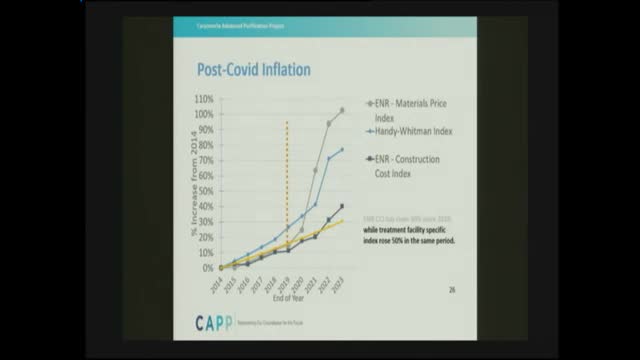Carpinteria Advanced Water Treatment Facility faces 90% cost increase since 2019
April 11, 2024 | Carpinteria City, Santa Barbara County, California

This article was created by AI summarizing key points discussed. AI makes mistakes, so for full details and context, please refer to the video of the full meeting. Please report any errors so we can fix them. Report an error »

In the heart of Carpinteria, city officials gathered on April 10, 2024, to discuss the future of the Carpinteria Valley Water District, focusing on the ambitious Advanced Water Treatment Facility (AWTF) project. As the meeting unfolded, it became clear that the project is not only vital for local water sustainability but also significantly impacted by rising construction costs.
The discussion highlighted a staggering 90% increase in project costs since 2019, primarily attributed to the expensive materials required for the AWTF. This facility, designed to enhance the region's water supply through advanced treatment processes, is facing financial pressures similar to those experienced by other potable reuse projects across Southern California. For instance, the costs for the SoCal Creek project have surged by over 30%, while the Las Virgenes project has seen a jaw-dropping 125% increase.
Officials explained that the rising costs are not merely a local issue but part of a broader trend affecting the water and wastewater industry. The Handy Whitman index, which tracks construction costs specific to this sector, has shown a significant rise, outpacing the general Construction Cost Index (CCI) by over 50% during the same period.
As the meeting progressed, the conversation shifted to the specifics of the AWTF's design and operational needs. Changes from the original 2019 report have led to increased capital costs. The facility's building size has expanded to accommodate necessary support areas, such as staff facilities, which were initially assumed to be available within existing structures. Additionally, the decision to include a below-grade equalization tank—critical for managing flow consistency—has added to the project's financial burden, though it promises lower operational costs in the long run.
The facility's capacity has also been adjusted, increasing from 1.2 million gallons per day (MGD) to 1.5 MGD. This change aims to optimize water capture during winter months and improve operational efficiency, reducing the frequency of water treatment processes.
As the meeting concluded, the implications of these discussions were clear: while the Carpinteria Valley Water District is committed to advancing its water treatment capabilities, it must navigate significant financial challenges. The community's future water security hinges on the successful execution of this project, making the ongoing dialogue about costs and design all the more critical. The path forward remains uncertain, but the determination to enhance local water resources is unwavering.
The discussion highlighted a staggering 90% increase in project costs since 2019, primarily attributed to the expensive materials required for the AWTF. This facility, designed to enhance the region's water supply through advanced treatment processes, is facing financial pressures similar to those experienced by other potable reuse projects across Southern California. For instance, the costs for the SoCal Creek project have surged by over 30%, while the Las Virgenes project has seen a jaw-dropping 125% increase.
Officials explained that the rising costs are not merely a local issue but part of a broader trend affecting the water and wastewater industry. The Handy Whitman index, which tracks construction costs specific to this sector, has shown a significant rise, outpacing the general Construction Cost Index (CCI) by over 50% during the same period.
As the meeting progressed, the conversation shifted to the specifics of the AWTF's design and operational needs. Changes from the original 2019 report have led to increased capital costs. The facility's building size has expanded to accommodate necessary support areas, such as staff facilities, which were initially assumed to be available within existing structures. Additionally, the decision to include a below-grade equalization tank—critical for managing flow consistency—has added to the project's financial burden, though it promises lower operational costs in the long run.
The facility's capacity has also been adjusted, increasing from 1.2 million gallons per day (MGD) to 1.5 MGD. This change aims to optimize water capture during winter months and improve operational efficiency, reducing the frequency of water treatment processes.
As the meeting concluded, the implications of these discussions were clear: while the Carpinteria Valley Water District is committed to advancing its water treatment capabilities, it must navigate significant financial challenges. The community's future water security hinges on the successful execution of this project, making the ongoing dialogue about costs and design all the more critical. The path forward remains uncertain, but the determination to enhance local water resources is unwavering.
View full meeting
This article is based on a recent meeting—watch the full video and explore the complete transcript for deeper insights into the discussion.
View full meeting
